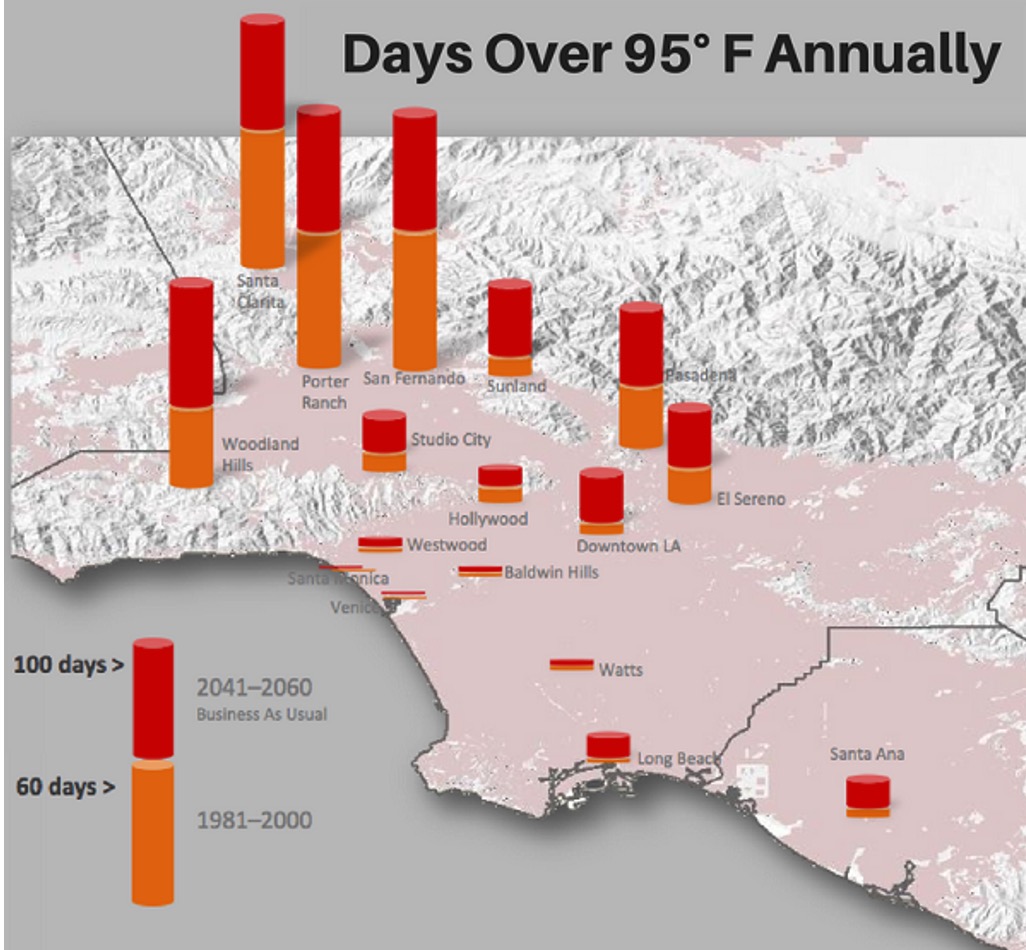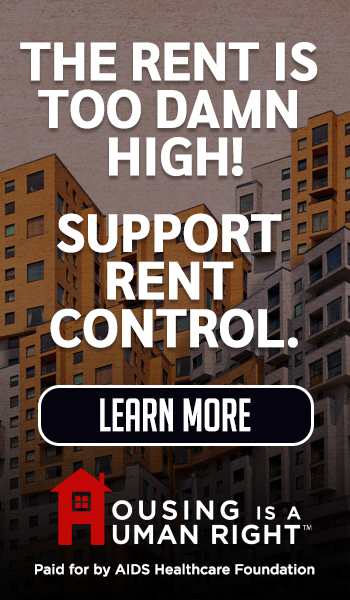Comments
PLANNING WATCH - It is easy to focus on President Trump’s climate change denials and forget that similar inaction takes place at LA’s City Hall.
Los Angeles has a legally required General Plan, but it does NOT have any elements (chapters) that address climate change. For example, the Air Quality Element is 40 years old, and its focus is smog.
The General Plan Framework Element was readopted 25 years ago, and it does not have any sections on climate change.
LA Mayor Karen Bass has posted the 2015 Sustainable City pLAn on her website, but it is NOT a General Plan element. It is an Executive document that can be rescinded at the Mayor’s whim.
Sammy Roth, the LA Times climate columnist, wrote an article in May 2025 that castigated City Hall on climate change:
- Mayor Bass intends to shut down City Hall’s Climate Emergency Mobilization Office to reduce LA’s billion dollar budget deficit.
- In response to January’s Palisades wildfire, rebuilt houses will NOT be required to become all electric.
- Mayor Bass will eliminate the Planning Department’s Environmental Justice Team. Its 492 page Climate Vulnerability Assessment (CVA) has detailed sections on extreme heat, precipitation and flooding, drought, wildfires, sea level rise, and public health in Los Angeles. Furthermore, California’s General Plan Guidelines have a chapter on the mandatory Environmental Element. An upgraded CVA report could become LA’s General Plan Environmental Element, but there are no proposals to do so.
Nevertheless, we know what aspects of climate change should be addressed in the General Plan’s Environmental Element. For example, climate change made January’s firestorms 35 percent more destructive. LA City Planning’s CVA report also presents other examples of local climate impacts:
Extreme heat: Over the next 70 years, LA temperatures will rise between 2 to 8 degrees, depending on the climate change scenario:
“By 2050, there may be 9 to 14 extreme heat days each year citywide. By 2100, that may rise to 15 to days annually. In the past, these types of events would last about two days. By 2050, the average extreme heat event may last four to five days. By 2100, a typical extreme heat event could span five to eight days.”

Precipitation and flooding: Even though precipitation will gradually decline, there will still be years of above average rain and flooding:
“The neighborhoods most vulnerable to extreme precipitation and flooding include Central City, South Los Angeles, Sun Valley - La Tuna Canyon, Westlake, and Wilshire.”
Sea level rise: Sea level rise will be gradual, measured in millimeters per year, but by the end of the 21st century, quantitative change will become qualitative:
“Coastal low-lying areas are the most vulnerable. However, exposure will be increased for tidal and upstream waterbodies. The Port of Los Angeles, Venice, and Wilmington - Harbor City will become more exposed to flooding resulting from sea level rise.”
Drought: Precipitation will decline throughout the 21st century.
“All areas of the City are likely to experience drought. . . . Climate projections show droughts will occur more often and increase in length and severity because of hotter temperatures and changes to seasonal precipitation trends in the Los Aneles area.”
Wildfires: We know that climate change already made wildfires 35 percent more destructive, and this will increase, in part a result of allowing building in fire-prone areas:
“Areas designated as wildland-urban interface(WUI) areas are the most vulnerable. These are the areas where development is adjacent to densely vegetated areas. Many of the City’s communities face severe wildfire exposure.”
What can be done: These forecasts for serious climate impacts are reliable, and the Trump Administration’s denials, combined with Mayor Bass’s lowkey effort, must be opposed. Furthermore, adaptation and mitigation strategies for these climate impacts must be boldly presented to counter Washington’s and LA’s ho-hum approach.
Chapter 4 - Local Solutions for Implementation in LA City Planning’s Climate Vulnerability Assessment report lists many programs that counter climate change in Los Angeles. Some, like extensive tree planting, are no-brainers, and surrounding cities already demonstrate that it can be done. Other solutions, like expanding green space in underserved communities are so vague that there are no models to copy.
Conclusion: The failure of both major US political parties to support policies and actions that reduce climate change are a signal to redouble our efforts -- while we still can.
(Dick Platkin ([email protected]) is a retired LA city planner, who reports on local planning issues. He is a board member of United Neighborhoods for Los Angeles (UN4LA). Previous columns are available at the CityWatchLA archives.)
















